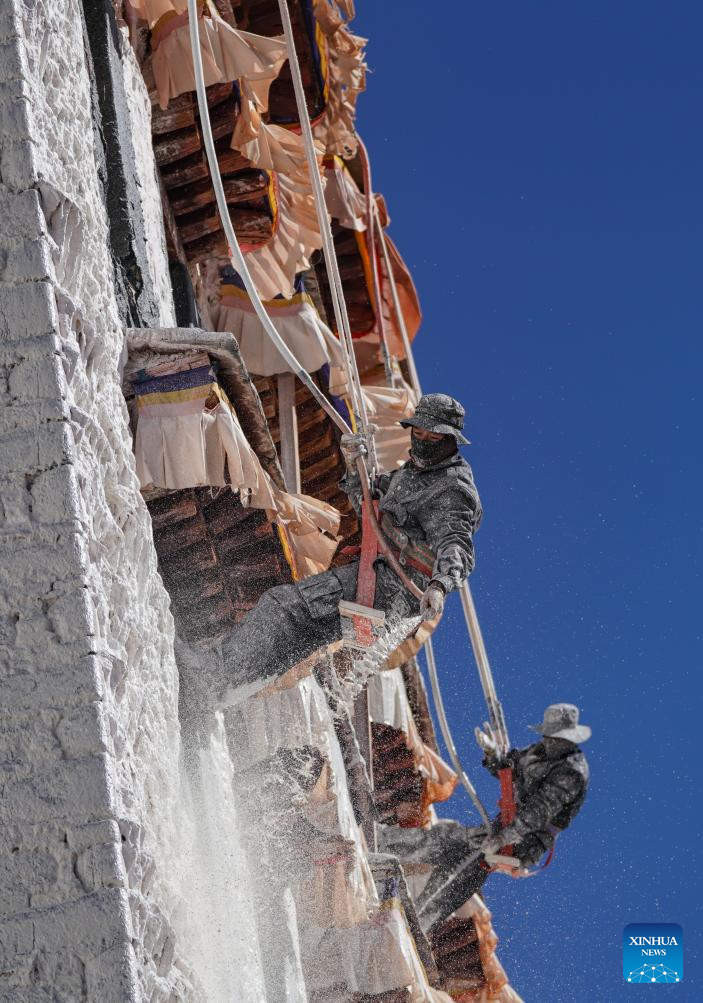
Staff members of the maintenance unit of the Potala Palace's management office spray coating onto the wall of the palace in Lhasa, southwest China's Xizang Autonomous Region, Oct. 30, 2024. Perched atop Mount Marpori in central Lhasa, the capital of southwest China's Xizang Autonomous Region, the Potala Palace, built by Tibetan King Songtsen Gampo in the seventh century and expanded in the 17th century, is a typical Tibetan traditional earth-stone-wood structure with more than 1,200 rooms.
The maintenance unit of the Potala Palace's management office was officially established in 2003. At present, it has a crew of more than 60 traditional craftsmen, composed of carpenters, stonemasons, tailors, painters and others. The team has made massive contributions to the preservation of the palace. (Xinhua/Jigme Dorje)
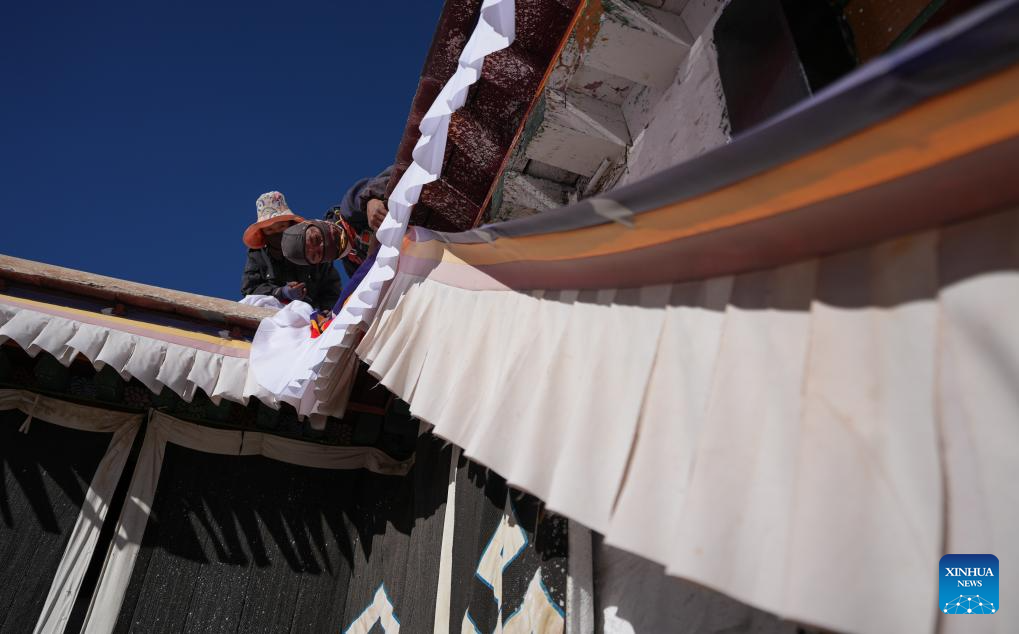
Staff members of the maintenance unit of the Potala Palace's management office change the cloth at the palace in Lhasa, southwest China's Xizang Autonomous Region, Dec. 4, 2024. Perched atop Mount Marpori in central Lhasa, the capital of southwest China's Xizang Autonomous Region, the Potala Palace, built by Tibetan King Songtsen Gampo in the seventh century and expanded in the 17th century, is a typical Tibetan traditional earth-stone-wood structure with more than 1,200 rooms.
The maintenance unit of the Potala Palace's management office was officially established in 2003. At present, it has a crew of more than 60 traditional craftsmen, composed of carpenters, stonemasons, tailors, painters and others. The team has made massive contributions to the preservation of the palace. (Xinhua/Jigme Dorje)
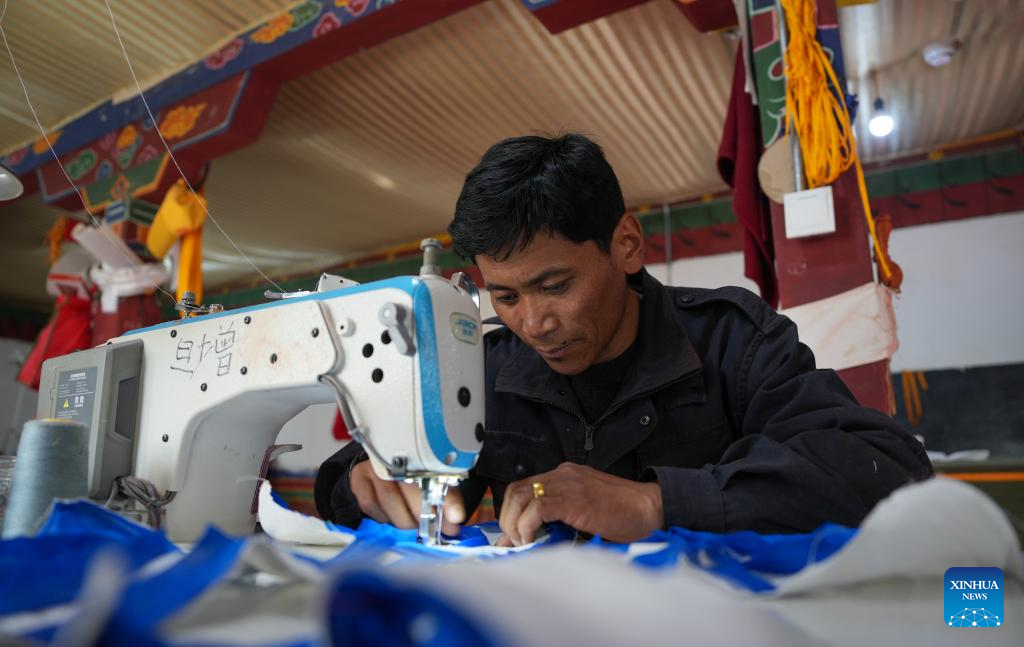
A staff member of the maintenance unit of the Potala Palace's management office sews a door curtain in Lhasa, southwest China's Xizang Autonomous Region, Dec. 4, 2024. Perched atop Mount Marpori in central Lhasa, the capital of southwest China's Xizang Autonomous Region, the Potala Palace, built by Tibetan King Songtsen Gampo in the seventh century and expanded in the 17th century, is a typical Tibetan traditional earth-stone-wood structure with more than 1,200 rooms.
The maintenance unit of the Potala Palace's management office was officially established in 2003. At present, it has a crew of more than 60 traditional craftsmen, composed of carpenters, stonemasons, tailors, painters and others. The team has made massive contributions to the preservation of the palace. (Xinhua/Jigme Dorje)
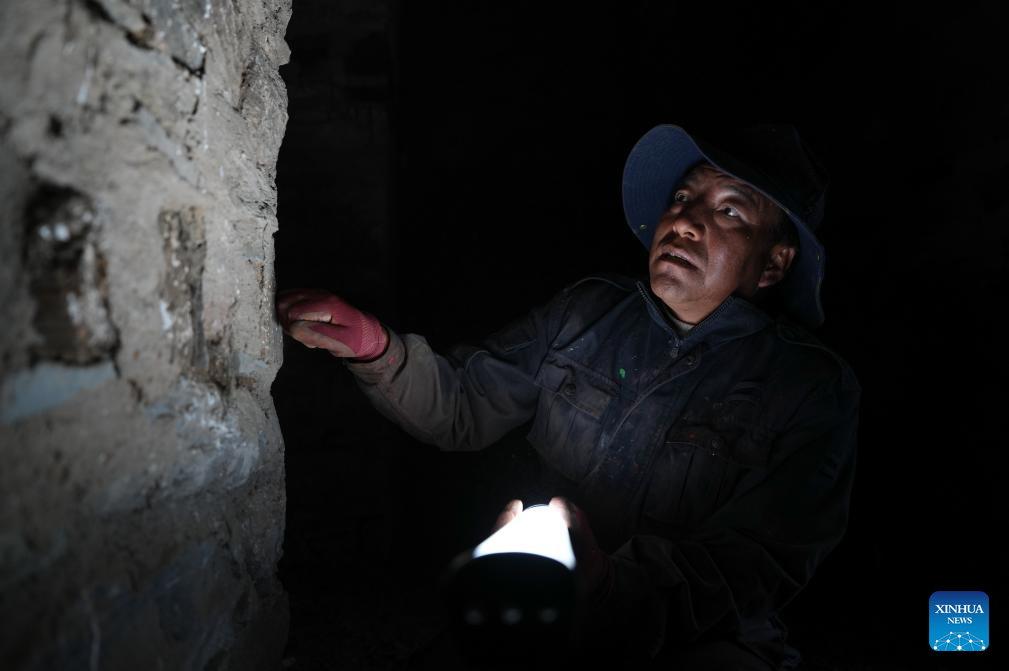
A staff member of the maintenance unit of the Potala Palace's management office patrols the palace in Lhasa, southwest China's Xizang Autonomous Region, Dec. 4, 2024. Perched atop Mount Marpori in central Lhasa, the capital of southwest China's Xizang Autonomous Region, the Potala Palace, built by Tibetan King Songtsen Gampo in the seventh century and expanded in the 17th century, is a typical Tibetan traditional earth-stone-wood structure with more than 1,200 rooms.
The maintenance unit of the Potala Palace's management office was officially established in 2003. At present, it has a crew of more than 60 traditional craftsmen, composed of carpenters, stonemasons, tailors, painters and others. The team has made massive contributions to the preservation of the palace. (Xinhua/Jigme Dorje)
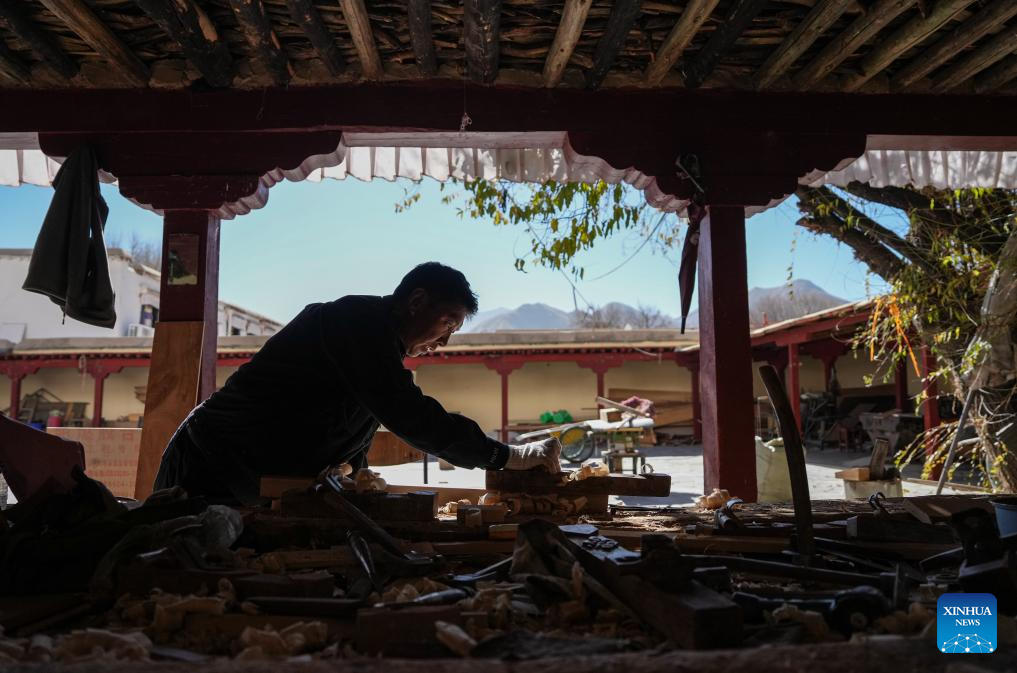
A staff member of the maintenance unit of the Potala Palace's management office makes wooden parts needed in refurbishment of the palace in Lhasa, southwest China's Xizang Autonomous Region, Dec. 4, 2024. Perched atop Mount Marpori in central Lhasa, the capital of southwest China's Xizang Autonomous Region, the Potala Palace, built by Tibetan King Songtsen Gampo in the seventh century and expanded in the 17th century, is a typical Tibetan traditional earth-stone-wood structure with more than 1,200 rooms.
The maintenance unit of the Potala Palace's management office was officially established in 2003. At present, it has a crew of more than 60 traditional craftsmen, composed of carpenters, stonemasons, tailors, painters and others. The team has made massive contributions to the preservation of the palace. (Xinhua/Jigme Dorje)
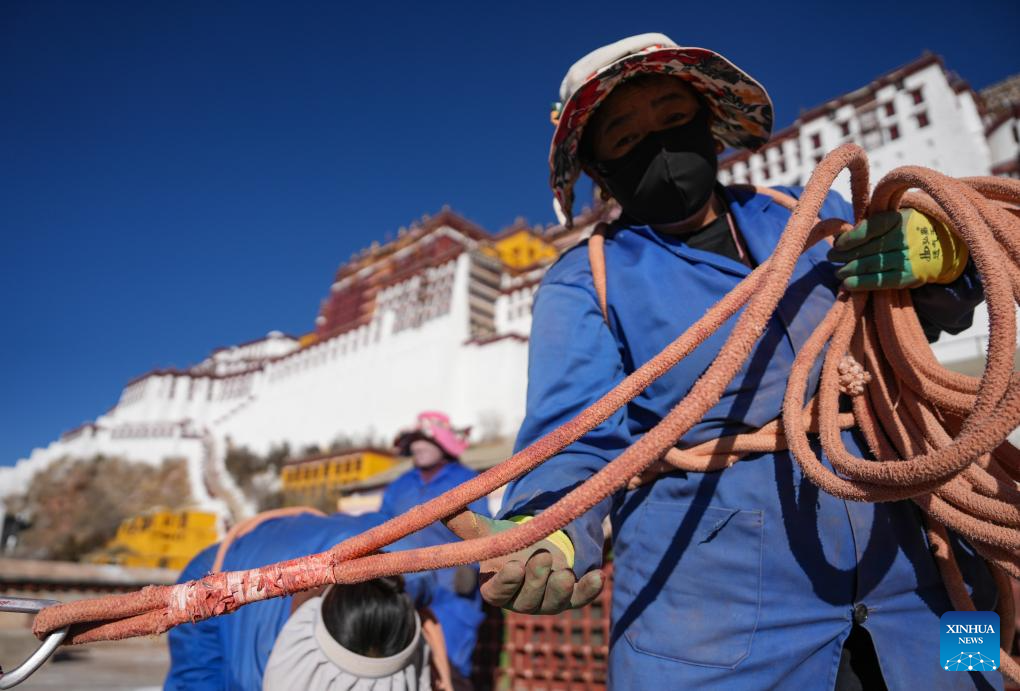
Staff members of the maintenance unit of the Potala Palace's management office sort out safety ropes before painting the wall of the palace in Lhasa, southwest China's Xizang Autonomous Region, Dec. 4, 2024. Perched atop Mount Marpori in central Lhasa, the capital of southwest China's Xizang Autonomous Region, the Potala Palace, built by Tibetan King Songtsen Gampo in the seventh century and expanded in the 17th century, is a typical Tibetan traditional earth-stone-wood structure with more than 1,200 rooms.
The maintenance unit of the Potala Palace's management office was officially established in 2003. At present, it has a crew of more than 60 traditional craftsmen, composed of carpenters, stonemasons, tailors, painters and others. The team has made massive contributions to the preservation of the palace. (Xinhua/Jigme Dorje)
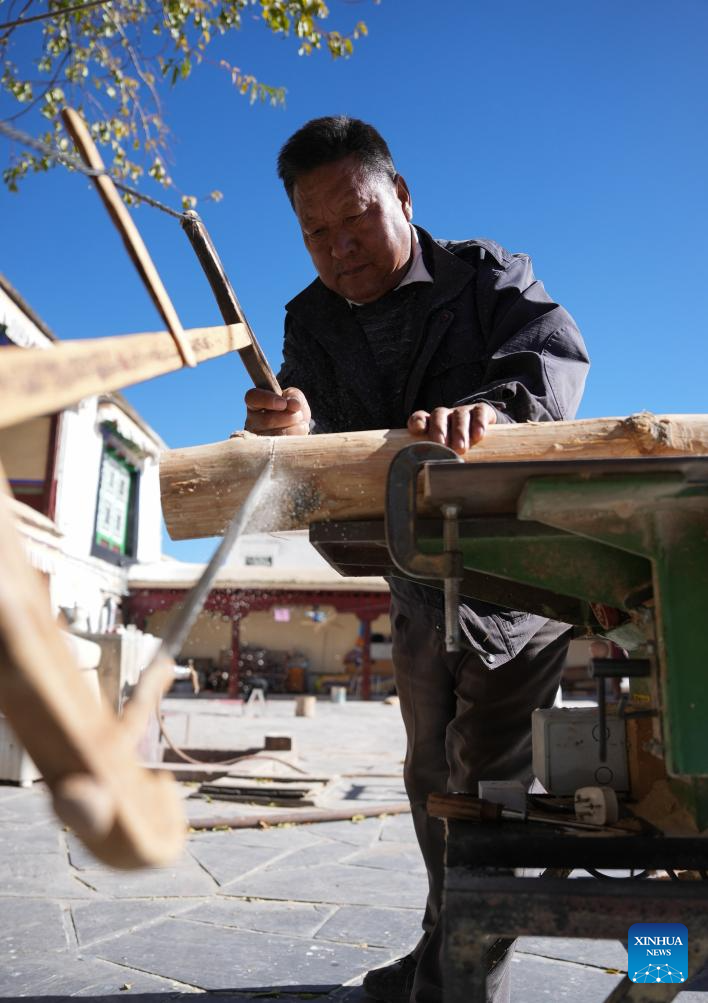
A staff member of the maintenance unit of the Potala Palace's management office makes wooden parts needed in refurbishment of the palace in Lhasa, southwest China's Xizang Autonomous Region, Dec. 4, 2024. Perched atop Mount Marpori in central Lhasa, the capital of southwest China's Xizang Autonomous Region, the Potala Palace, built by Tibetan King Songtsen Gampo in the seventh century and expanded in the 17th century, is a typical Tibetan traditional earth-stone-wood structure with more than 1,200 rooms.
The maintenance unit of the Potala Palace's management office was officially established in 2003. At present, it has a crew of more than 60 traditional craftsmen, composed of carpenters, stonemasons, tailors, painters and others. The team has made massive contributions to the preservation of the palace. (Xinhua/Jigme Dorje)
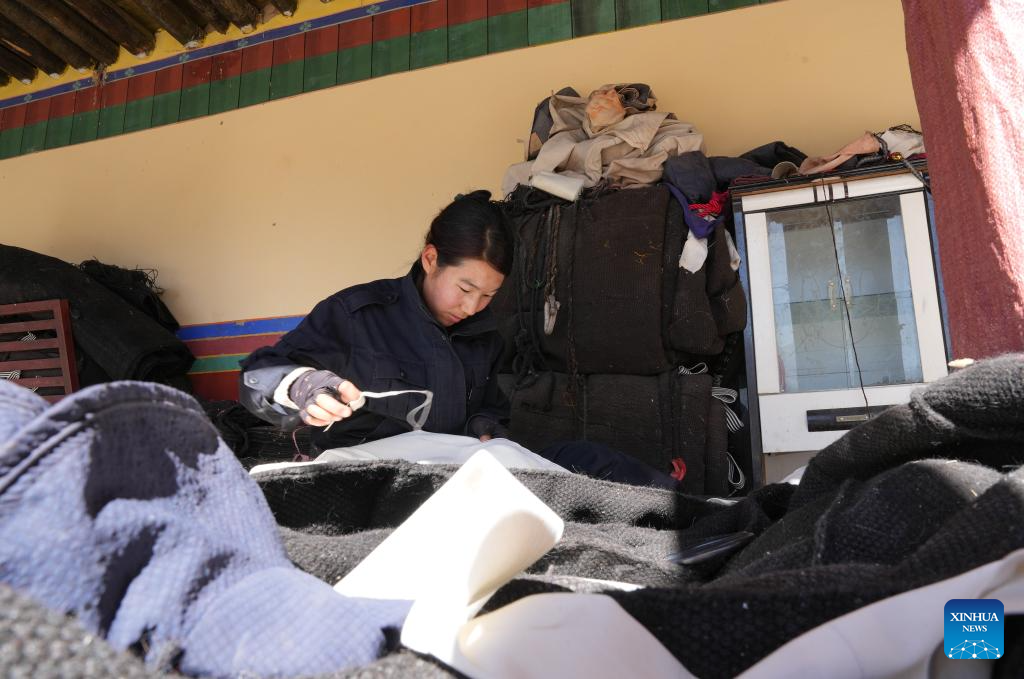
A staff member of the maintenance unit of the Potala Palace's management office sews a door curtain in Lhasa, southwest China's Xizang Autonomous Region, Dec. 4, 2024. Perched atop Mount Marpori in central Lhasa, the capital of southwest China's Xizang Autonomous Region, the Potala Palace, built by Tibetan King Songtsen Gampo in the seventh century and expanded in the 17th century, is a typical Tibetan traditional earth-stone-wood structure with more than 1,200 rooms.
The maintenance unit of the Potala Palace's management office was officially established in 2003. At present, it has a crew of more than 60 traditional craftsmen, composed of carpenters, stonemasons, tailors, painters and others. The team has made massive contributions to the preservation of the palace. (Xinhua/Jigme Dorje)
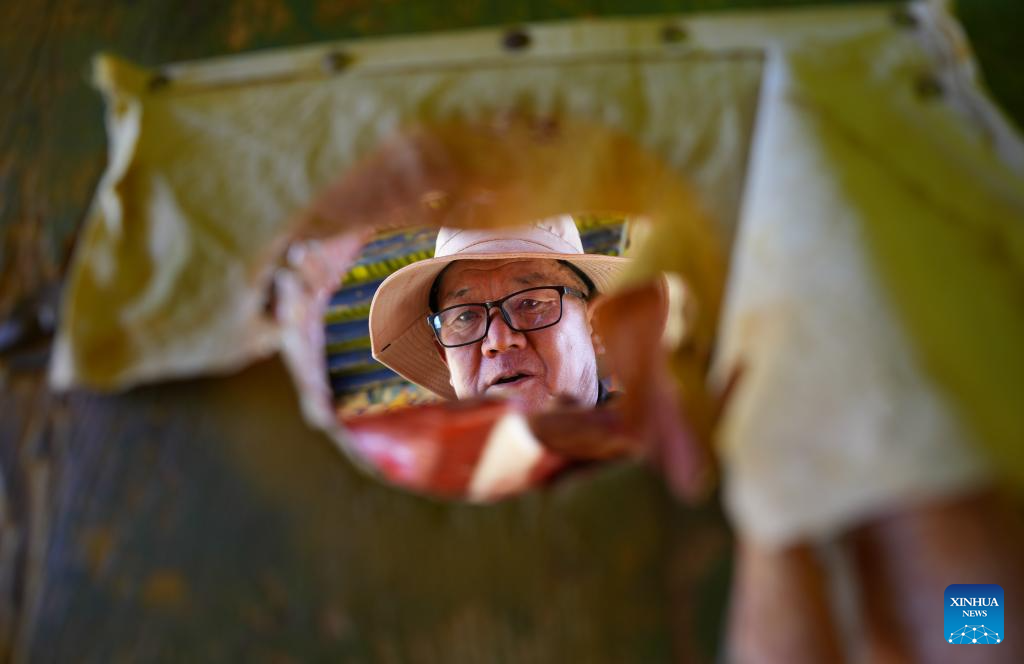
A staff member of the maintenance unit of the Potala Palace's management office paints the door in Lhasa, southwest China's Xizang Autonomous Region, Dec. 4, 2024. Perched atop Mount Marpori in central Lhasa, the capital of southwest China's Xizang Autonomous Region, the Potala Palace, built by Tibetan King Songtsen Gampo in the seventh century and expanded in the 17th century, is a typical Tibetan traditional earth-stone-wood structure with more than 1,200 rooms.
The maintenance unit of the Potala Palace's management office was officially established in 2003. At present, it has a crew of more than 60 traditional craftsmen, composed of carpenters, stonemasons, tailors, painters and others. The team has made massive contributions to the preservation of the palace. (Xinhua/Jigme Dorje)
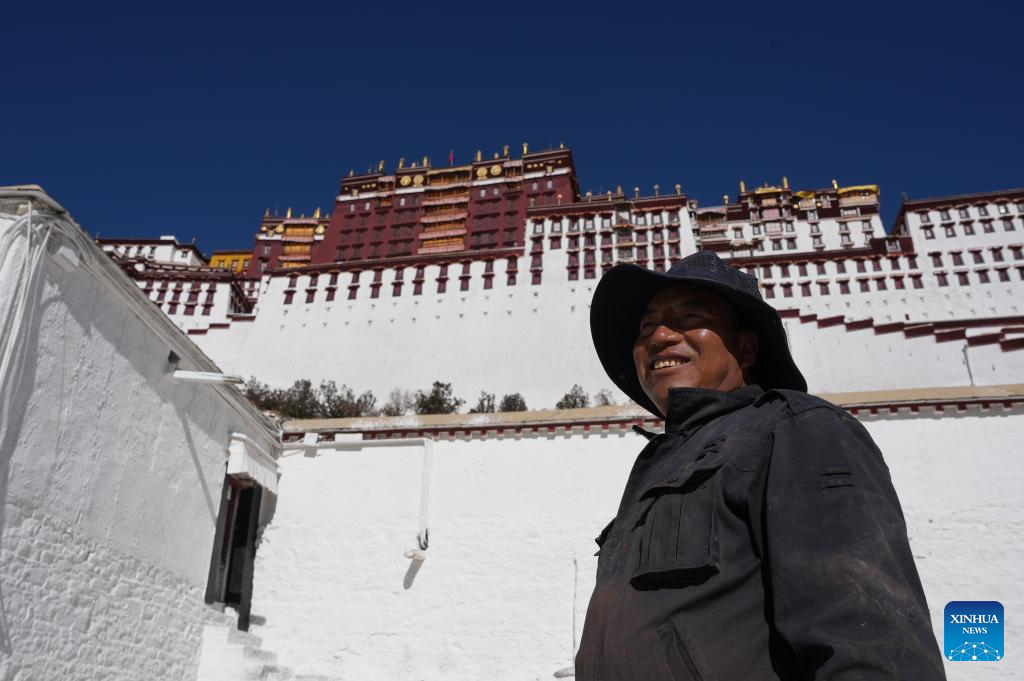
A staff member of the maintenance unit of the Potala Palace's management office patrols the palace in Lhasa, southwest China's Xizang Autonomous Region, Dec. 4, 2024. Perched atop Mount Marpori in central Lhasa, the capital of southwest China's Xizang Autonomous Region, the Potala Palace, built by Tibetan King Songtsen Gampo in the seventh century and expanded in the 17th century, is a typical Tibetan traditional earth-stone-wood structure with more than 1,200 rooms.
The maintenance unit of the Potala Palace's management office was officially established in 2003. At present, it has a crew of more than 60 traditional craftsmen, composed of carpenters, stonemasons, tailors, painters and others. The team has made massive contributions to the preservation of the palace. (Xinhua/Jigme Dorje)
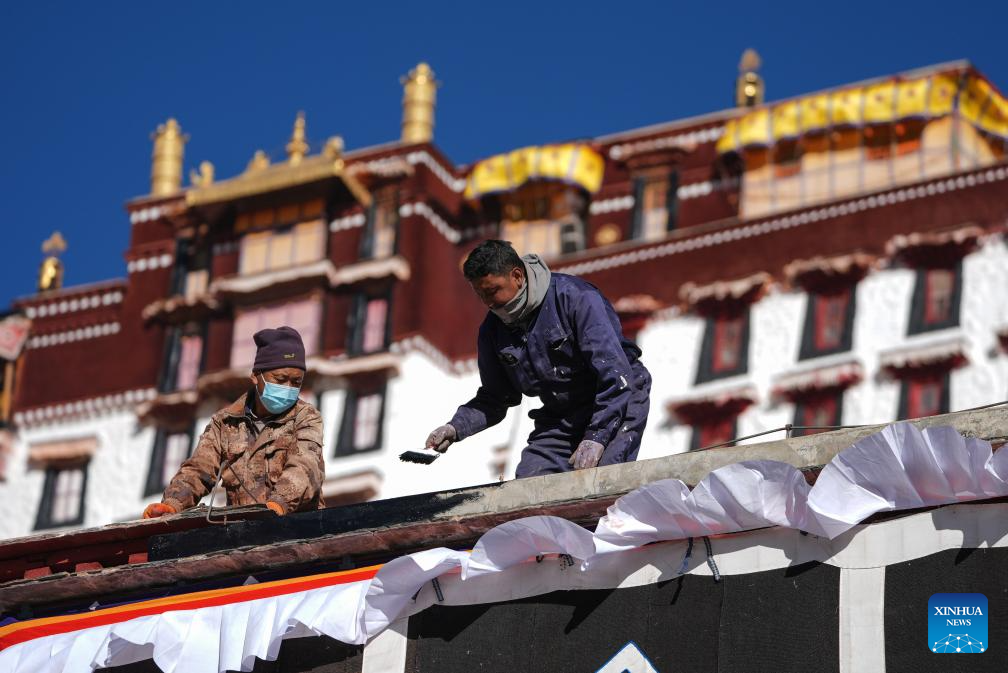
Staff members of the maintenance unit of the Potala Palace's management office paint the wall of the palace in Lhasa, southwest China's Xizang Autonomous Region, Dec. 4, 2024. Perched atop Mount Marpori in central Lhasa, the capital of southwest China's Xizang Autonomous Region, the Potala Palace, built by Tibetan King Songtsen Gampo in the seventh century and expanded in the 17th century, is a typical Tibetan traditional earth-stone-wood structure with more than 1,200 rooms.
The maintenance unit of the Potala Palace's management office was officially established in 2003. At present, it has a crew of more than 60 traditional craftsmen, composed of carpenters, stonemasons, tailors, painters and others. The team has made massive contributions to the preservation of the palace. (Xinhua/Jigme Dorje)
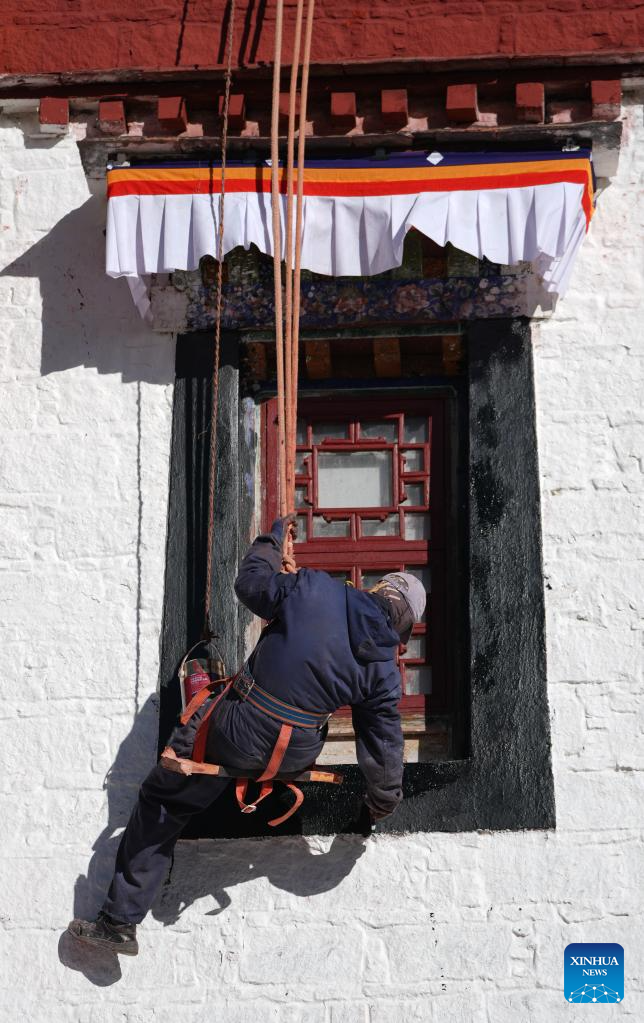
A staff member of the maintenance unit of the Potala Palace's management office paints the wall of the palace in Lhasa, southwest China's Xizang Autonomous Region, Dec. 4, 2024. Perched atop Mount Marpori in central Lhasa, the capital of southwest China's Xizang Autonomous Region, the Potala Palace, built by Tibetan King Songtsen Gampo in the seventh century and expanded in the 17th century, is a typical Tibetan traditional earth-stone-wood structure with more than 1,200 rooms.
The maintenance unit of the Potala Palace's management office was officially established in 2003. At present, it has a crew of more than 60 traditional craftsmen, composed of carpenters, stonemasons, tailors, painters and others. The team has made massive contributions to the preservation of the palace. (Xinhua/Jigme Dorje)



